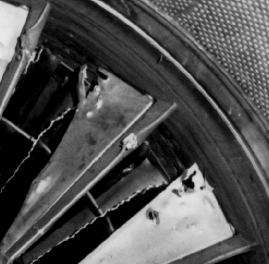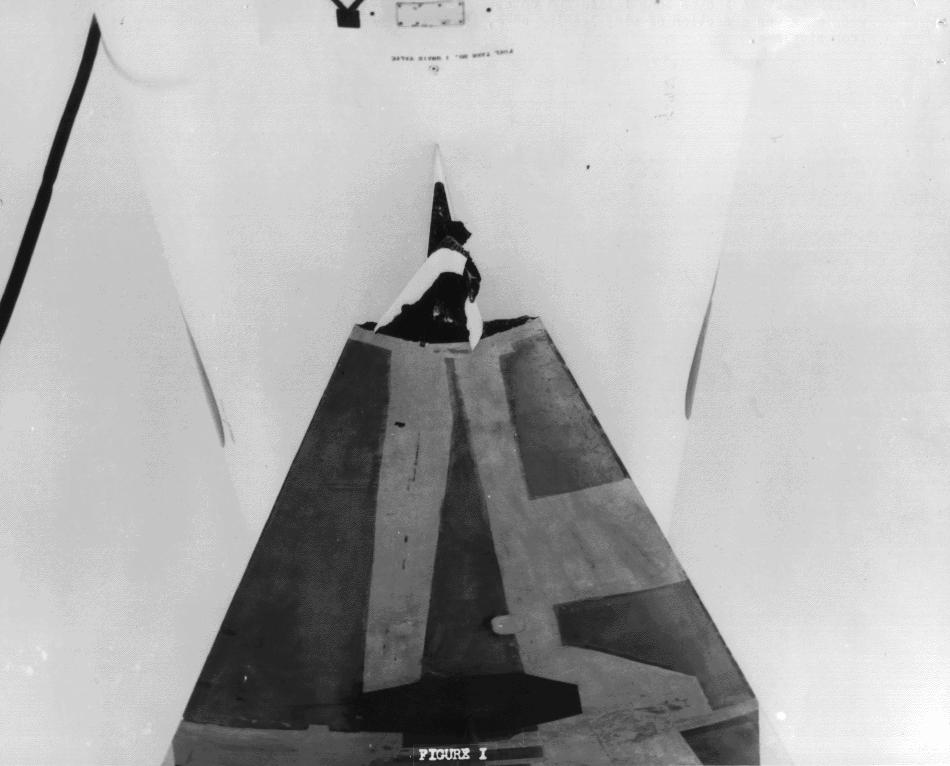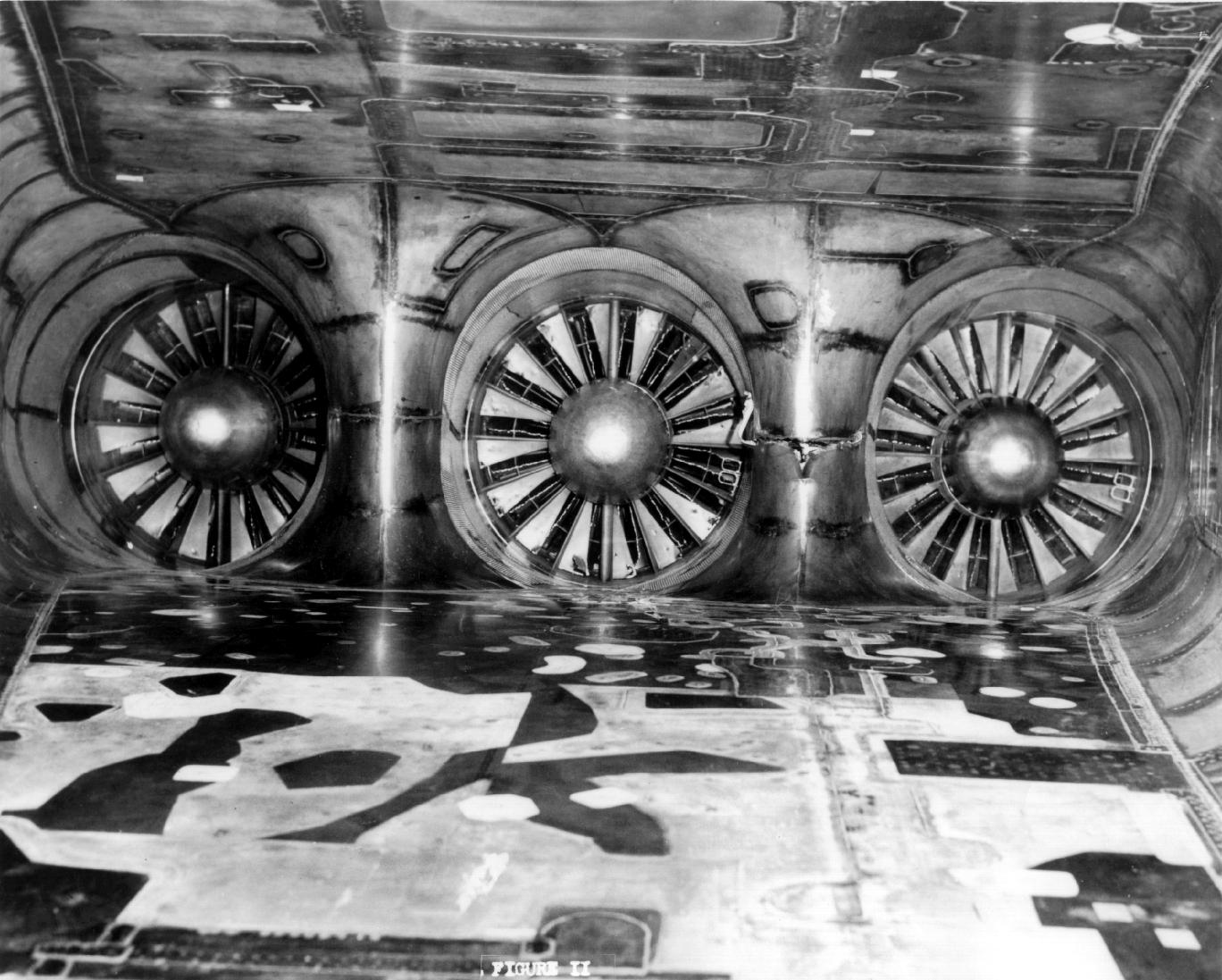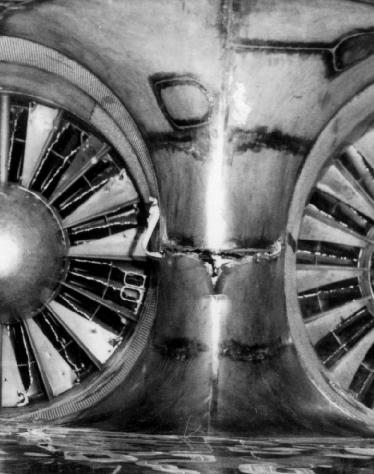During the seventh flight, on March 4th, White and Fulton shattered records again, sustaining supersonic flight for 60 minutes, reaching a top speed of Mach 1.85. The eighth flight introduced the last of the four pilots, North American's Van Shepard, to the aircraft, and saw Mach 2 fall to the six J93 engines. The eighth flight also demonstrated how quickly Mach 2 could take the Valkyrie where the pilots didn't plan on going, as a momentary glitch in the single TACAN system led to an inadvertent "booming" of Las Vegas that early morning. On the tenth flight, the Valkyrie sustained 74 minutes of supersonic flight, including 50 minutes beyond Mach 2.
May 7th, 1965 was AV/1's 12th flight, with Al White and Fitz Fulton at the controls. Traveling at Mach 2.58 (almost 1700mph), a 'thump' was heard in the cockpit, soon followed by a number of engine-related alarms. Engines three, four, five, and six were shut down right away. As the chase planes caught up, they reported that the horizontal splitter (the very apex of the delta wing) had torn away. Wind tunnel testing and theory said that the splitter would only face upward loads. Reality proved different, as sharp downward loads caused the splitter to break up, with debris going into the engine intakes and doing severe damage to the engines. For the final approach, the number five engine was restarted to provide some thrust from the right side, and the XB-70 landed on the long lake bed without major incident. All six engines, nearly one-sixth of the 38 ever built, were destroyed beyond repair. After this flight, the splitter itself was replaced with a single solid piece in place of the honeycomb unit that had failed.
At this point, concerns about the integrity of the honeycomb skin began, and the next 4 flights concerned themselves with "heat soaking" the skin for sustained periods of time. For the first time, the XB-70's ability to reach Mach 3 was questioned.





 More
More
 Win a FREE Membership!
Win a FREE Membership!